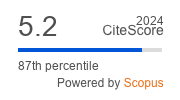Article | Open Access
Drawing Lessons When Objectives Differ? Assessing Renewable Energy Policy Transfer from Germany to Morocco
| Views: | 6203 | | | Downloads: | 3372 |
Abstract: Given the tremendous energy challenges Morocco faces, and its potential role as an exporter of green electricity to Europe, the country has been particularly targeted by Germany’s efforts to promote the uptake of renewable energies abroad. This paper explores whether ideas and policies in the field of renewable energy effectively traveled through transfer channels established between Germany and Morocco. In particular, the question of how Morocco’s policy objectives shaped the result of transfer processes is discussed, shedding light on a currently under-researched determinant for policy transfer. Drawing upon forty-five semi-structured interviews with Moroccan, German, and international stakeholders, as well as card-ranking exercises, the article provides first-hand insights into the dynamics and drivers of Morocco’s “energy transition”. Findings presented in the article show that differing policy objectives did not preclude the transfer of ideas between Germany and Morocco, but shaped its outcome with regard to policy instrument selection. While basic policy orientations in favour of renewable energies were facilitated by transferred knowledge, a perceived incompatibility between domestic policy objectives and the policy instruments used in the foreign model led to selective lesson-drawing from the German example. This finding underlines the importance for “senders” who wish to actively promote sustainable energy policies abroad to adapt outreach strategies to the policy objectives of potential followers.
Keywords: diffusion; Energiewende; energy transition; Germany; Morocco; policy transfer; policy objectives; renewable energy
Published:
© The author(s). This is an open access article distributed under the terms of the Creative Commons Attribution 4.0 license (http://creativecommons.org/licenses/by/4.0), which permits any use, distribution, and reproduction of the work without further permission provided the original author(s) and source are credited.


